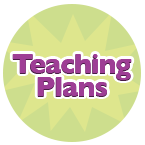Although detailed diagnostic assessment is not viable during whole-class Shared Reading sessions, you can assess students’ progress when working with small groups by observing their comprehension, book-handling, print-tracking, and word-solving behaviours. Remember, however, that you will be observing students as they read familiar texts; the observed behaviours may or may not be apparent when they encounter new texts.
Students who are ready to move from Small-Group Shared Reading to Guided Reading will exhibit many of the following beginning-reader characteristics. Consider Guided Reading for those students who:
understand that print holds a message
can retell information from the text
use picture cues to support comprehension and word solving
demonstrate good book-handling concepts
display some control over directionality concepts (e.g., know where to start reading and how to sweep left to right) but may be uncertain about line movement and inconsistent in word-by-word matching
locate some words around the classroom (e.g., names, special signs, words in chants and poems)
notice some print details (e.g., “That starts with ‘M’ like my name.”)
have developed memory for the text of predictable books and can check some graphic features
use language cues to make predictions
match some letters to sounds
can read a text while handling an individual copy of the book in Small-Group Shared Reading (phase three)
Moving Towards Guided Reading Checklist
The Moving Towards Guided Reading Checklist lists some of the early reading concepts and behaviours that students need to master. You can use it to jot down quick observations for each student after a Small-Group Shared Reading session. These observations will help you plan future instruction and determine when students are ready to move on to Guided Reading.
